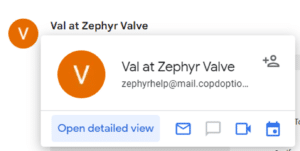Exercise and a healthy diet are recommended for everyone, but they can be especially beneficial for those suffering from chronic obstructive pulmonary disease, also known as COPD. But what do COPD exercises look like? And are there really foods that can help people with COPD?
Exercising with COPD
Often, exercise is challenging for people who already have difficulty breathing, but it can help people with COPD and emphysema in many ways.
Studies have shown that a moderate amount of exercise (20-30 minutes a day, 3-4 times per week) can help improve how the body uses its oxygen, energy levels, anxiety, stress, depression, sleep, self-esteem, cardiovascular fitness, muscle strength, and shortness of breath.1
Exercise helps the body use oxygen more productively. When the body learns to efficiently use its oxygen and strengthens both its cardiovascular and respiratory systems, it does not have to work as hard to breathe normally. (See the sidebar on the right for good COPD exercises.)1
If you suffer from COPD, you should always talk to your doctor first before beginning an exercise routine. If you use supplemental oxygen, you should exercise with it as well. To be safe, do not exercise without consulting your doctor if you have a fever or infection, feel nauseated, have chest pain, or are out of supplemental oxygen.3
Food and COPD
Nutrition is also a way to improve symptoms of COPD. Food is fuel for your body. When you eat, your body breaks down food and processes oxygen to produce energy. That is used for any function your body performs, even sleeping.
When eating with COPD, experts recommend sticking to foods that produce less carbon dioxide, such as protein and healthy fats. Experts also recommend eating protein, such as milk, eggs, cheese, meat, fish, poultry, nuts and dried beans or peas, twice per day.3
Avoid simple carbohydrates, such as sugar and soft drinks, and foods high in sodium.1, 2
Diet and exercise are a great way to lessen COPD symptoms and maintain a healthy weight. With COPD, there are risks associated with being either under- or overweight. People who are overweight may already have a harder time breathing, even without the lung damage from the disease. Underweight people are more susceptible to infections, including infections of the lungs.2
Talk to your doctor about your target weight and your calorie needs to achieve and/or maintain that weight.
Recommended COPD Exercises1
Aerobic Exercise: good for the heart and lungs. It teaches the body how to use its oxygen more efficiently. Examples of aerobic exercise include walking and swimming. It is recommended to do these exercises for 30 minutes a few times a week.
Stretching: good for relaxing the mind/body, improving flexibility, and using oxygen more efficiently. Doing yoga or using stretching as a warmup or cool down before or after exercising is recommended.
Resistance Training: strengthens muscles, including the muscles that help with breathing. Weights and resistance bands are typically used for this type of exercise, but going to the gym is not required for resistance training. The human body can be used as a weight.
Recommended COPD Diet2
Complex Carbohydrates: including whole-grain bread and pasta, fresh fruits and vegetables. These provide good calories for energy as well as fiber. Experts recommend eating 20 to 30 grams each day.
Protein: including milk, eggs, cheese, meat, fish, poultry, nuts and dried beans or peas. Experts recommend eating two sources of protein a day to maintain respiratory muscles.
Mono- and poly-unsaturated fats: from plant sources, such as canola, safflower and corn oils. These do not contain cholesterol.
Limit simple carbohydrates: including table sugar, candy, cake and regular soft drinks.
Limit trans fats and saturated fat: such as butter, lard, fat, hydrogenated oils, shortening, fried foods, cookies, crackers and pastries.
If you are short of breath while eating:
Some patients with COPD/emphysema experience shortness of breath while eating. Here are some helpful tips for mealtime:2
- Clear your airways at least one hour before eating
- Eat more slowly. Put your utensils down between bites. Take small bites and chew slowly. Breathe while chewing.
- Choose foods that are easy to chew.
- Eating several small meals a day instead of three large meals.
- Drink liquids at the end of the meal.
- Eat while sitting up.
References:
- “Physical Activity and COPD.” American Lung Association, www.lung.org/lung-health-diseases/lung-disease-lookup/copd/living-with-copd/physical-activity.
- “Diet and Nutrition for Energy with COPD.” Cleveland Clinic, my.clevelandclinic.org/health/articles/9451-nutritional-guidelines-for-people-with-copd.
- “Nutrition and COPD.” American Lung Association, www.lung.org/lung-health-diseases/lung-disease-lookup/copd/living-with-copd/nutrition.
US-EN-1180-v2







 If you do not see an email from “Val at Zephyr Valve” in your inbox within 15 minutes of signing up, go to your “Spam” folder within Gmail. (You may have to click "More" to see the Spam folder.) Select the email from "Val at Zephyr Valve."
There will be a gray box at the top that says “Why is this message in spam?” Click the “Report Not Spam” button. This will move the email to your inbox.
If you do not see an email from “Val at Zephyr Valve” in your inbox within 15 minutes of signing up, go to your “Spam” folder within Gmail. (You may have to click "More" to see the Spam folder.) Select the email from "Val at Zephyr Valve."
There will be a gray box at the top that says “Why is this message in spam?” Click the “Report Not Spam” button. This will move the email to your inbox. Go back to your inbox and open the email. Click on the icon next to “Val at Zephyr Valve”, you’ll see a person icon with a “+”. Click that, and you can add Val to your Contacts list. If you don’t receive a second email from us in a few days, please check your Spam folder again.
Go back to your inbox and open the email. Click on the icon next to “Val at Zephyr Valve”, you’ll see a person icon with a “+”. Click that, and you can add Val to your Contacts list. If you don’t receive a second email from us in a few days, please check your Spam folder again.
